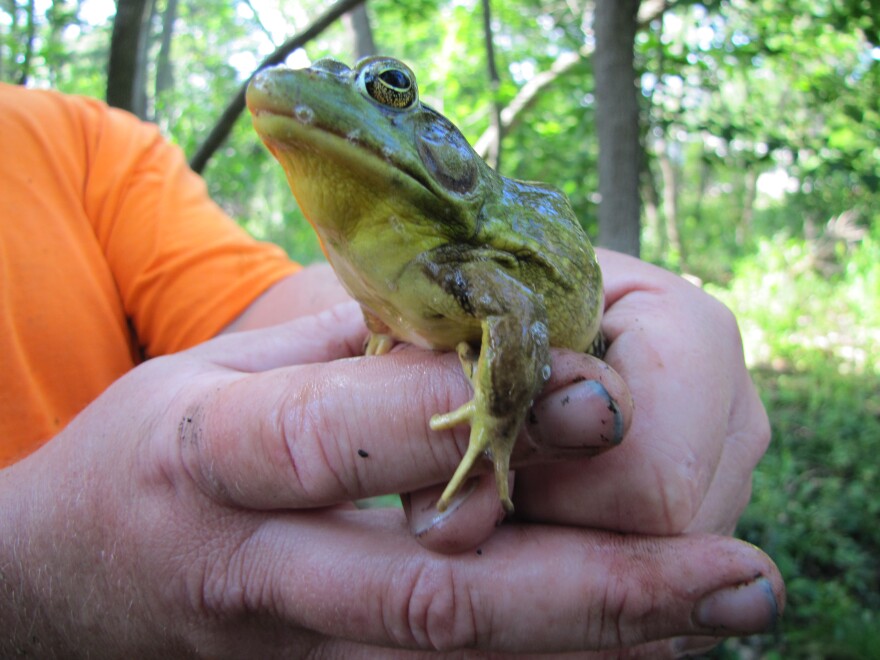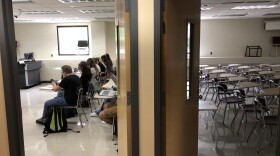Milwaukee Public Museum (MPM) is pooling the collective expertise of nearly 90 scientists and students to see how many species of plants and animals they can identify in 24 hours.
That’s a BioBlitz.
The idea sprouted back in 1996 when scientists inventoried a park in Washington D.C.
MPM’s Senior Vice President and Academic Dean, Ellen Censky, helped organize the first public-based BioBlitz that same year in Pittsburgh. She coordinated eight BioBlitz’s in three states since that time.
Why Grant Park?
Censky says county parks are perfect because they are multiuse. She wants to show how much plant and animal life live there.
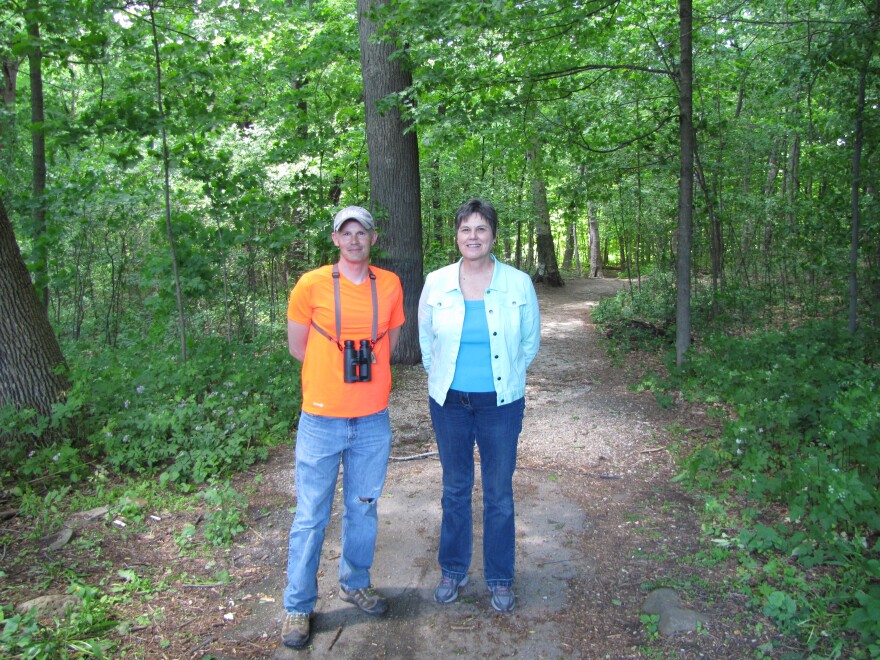
“Right next to the golf course, you could have an endangered species there,” Censky adds, “it really helps to highlight that biodiversity is not just in those pristine woodlands, it’s right in your backyard and until we start to understand what that diversity does for us, I don’t think we’ll be able to protect these areas.”
Brian Russart says the BioBlitz is going to be like Christmas morning.
He’s Natural Areas Coordinator with the Milwaukee County Department of Parks.
“I know the site pretty well, but there’s always surprises and I don’t get to walk every inch and I don’t have all the skill sets I need to inventory a land site like this,” Russart says.
Grant Park represents 381 of 10,000 acres of parkland he stewards.
“There’s only one of me going on, but we have an outstanding staff that certainly helps. It’s going to be a great learning process for them. They’re starting their careers so they are excited to come along and learn from the experts,” Russart says.
Milwaukee’s first BioBlitz was staged 20 miles north of Grant Park, along Lake Michigan at the Schlitz Audubon Nature Center
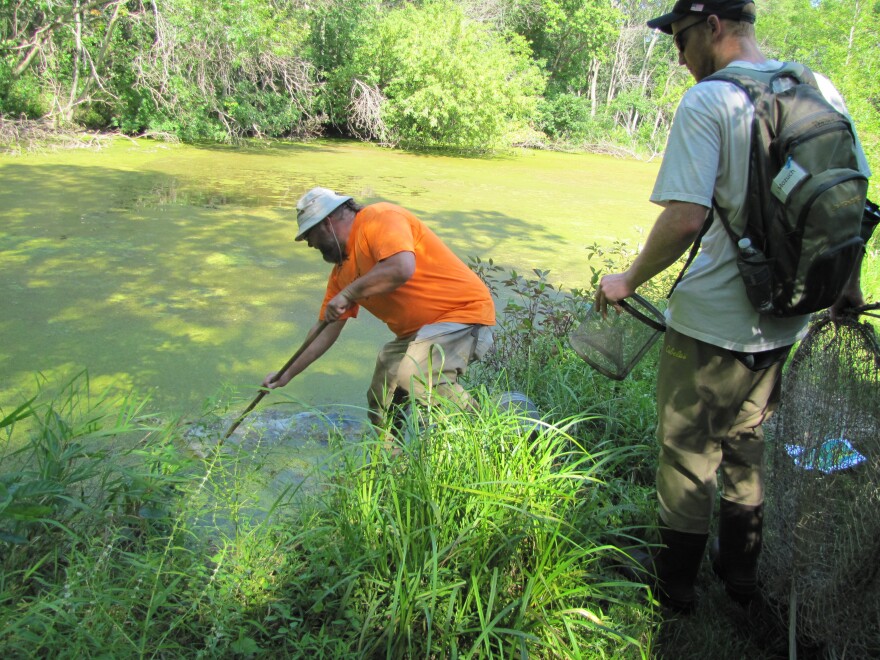
Joshua Kapfer was among the 49 BioBlitzers who helped identify plant and animal species at Schlitz Audubon. The UW-Whitewater biologist headed the reptile and amphibian brigade.
“Okay so we’re going to set traps in each of the quadrants and then we’re just to search for stuff and then come back here,” Kapfer said
Kapfer and nine of his students will be participating this weekend at the Grant Park BioBlitz.
Chris Yahnke of UW-Stevens Point will be back too. Last year, the biologist tracked bats late into the night at Schlitz Audubon.
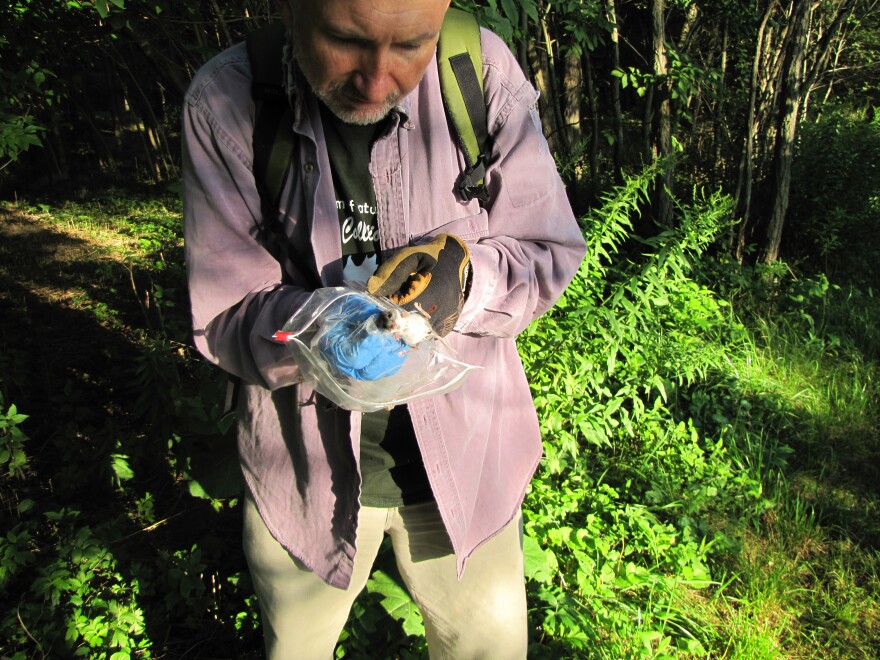
“Little brown, northern long-eared – which is the federally endangered one, so we had a few of those, hoary bats, which are the biggest bats in Wisconsin, silver-haired, red bats – a lot of them – and big brown bats. So we had six species, all of the species you would expect to find in this part of the state, we found flying around here last night,” Yahnke said.
Marc White is Schlitz Audubon’s conservation director. He says before the BioBlitz he didn’t know all of those bat species were hanging around Schlitz.
The BioBlitz reinforces his mission to fight invasive species and build up native habitat.
“I can’t say that we weren’t conserving but when you have four out of the six bat species threatened or special concerns species in Wisconsin. I think one of them is an endangered species in the United States, so having those residing there and utilizing this as habitat, just makes it that much more important that we conserve it,” White says.
The count at the end of last year’s BioBlitz: the teams had identified 853 species.
The news wasn’t all good.
For instance, one team spotted an invasive “jumping” worm. It rapidly consumes fallen leaves and topsoil that are critical to native species.
White calls that find unhappy, but not unexpected.
“It just adds one particularly aggressive earthworm species to our cluster,” White says.

He walks beneath a canopy of well-established trees where a team identified a prized plant species.
“Just over here among the birches and the basswood and the red oak is just a very small patch of blue-stemmed goldenrod,” White says.
He still marvels at its presence.
“Being an endangered species, I had never seen blue-stemmed golden rod before in my career. And so it somebody who’s actually seen it to be able to walk past it and point it out, and we had people like that on the day of the BioBlitz,” White says.
He is equally wowed by the crowd that showed up to see scientists at work during the BioBlitz.
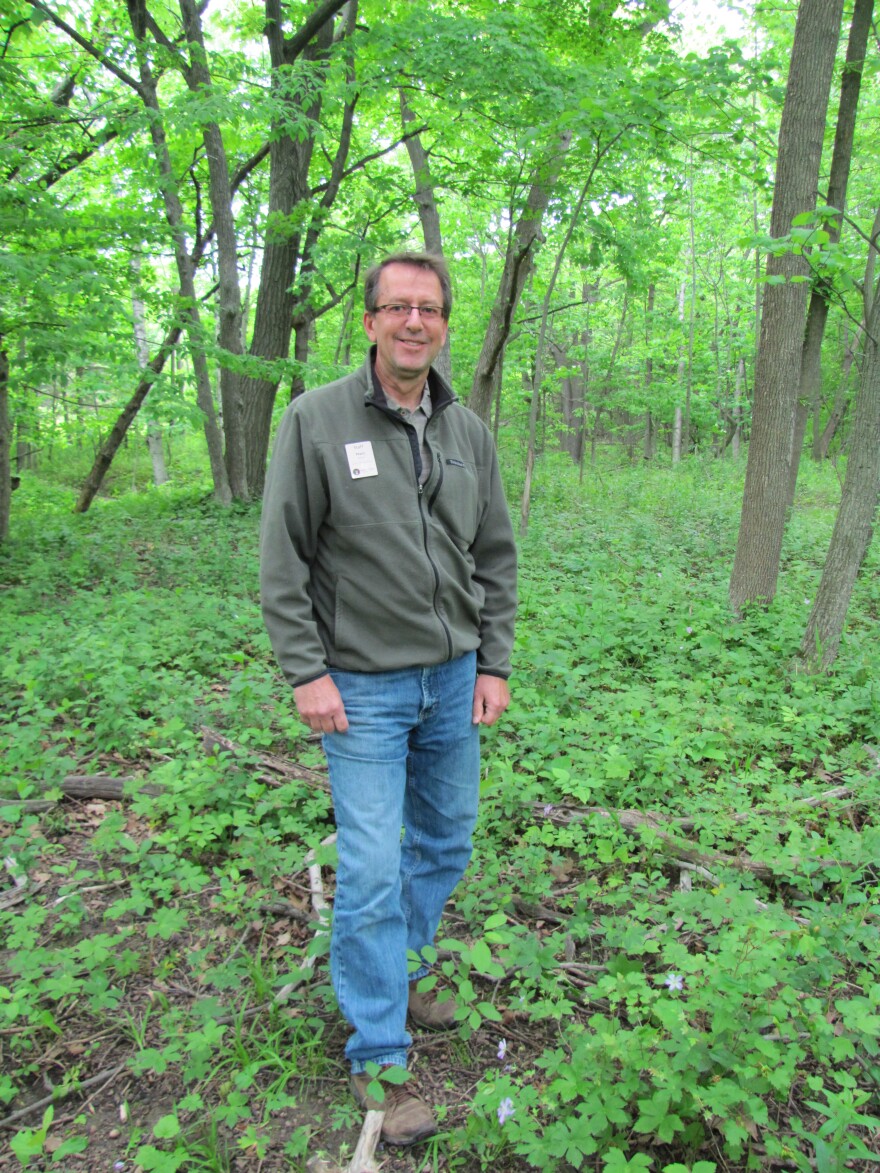
“To have hundreds and hundreds of people who never really exposed to science going on in a natural environment, to maybe be inspired by that, maybe make a career choice based on what they see and the fun that they have when they come out for an event like that,” White says.
He’s knee-deep in conservation planning, including figuring out how to manage storm water, another key element of strengthening remnant populations such as blue-stemmed goldenrod.
But White says he wouldn’t miss the BioBlitz at Grant Park and all of its 381 acres. “I get to be a part of the plant team,” he says.
_________________
The BioBlitz kicks off in Grant Park later today.
People can come observe the scientists at work and hear the final species results on Saturday between 10 am and 3 pm.


